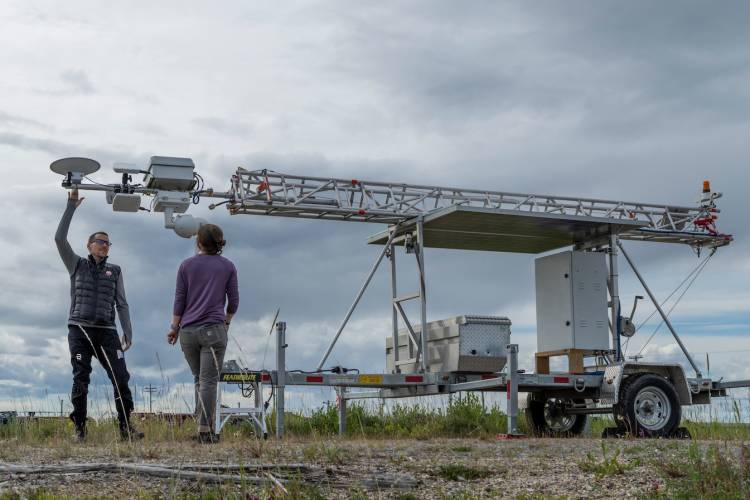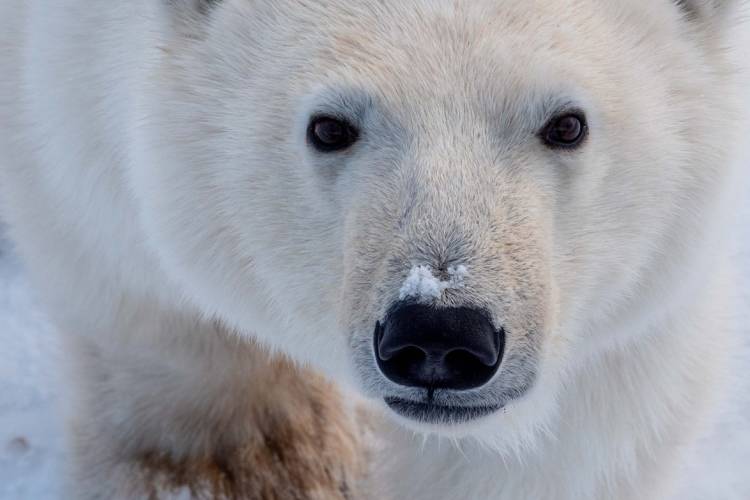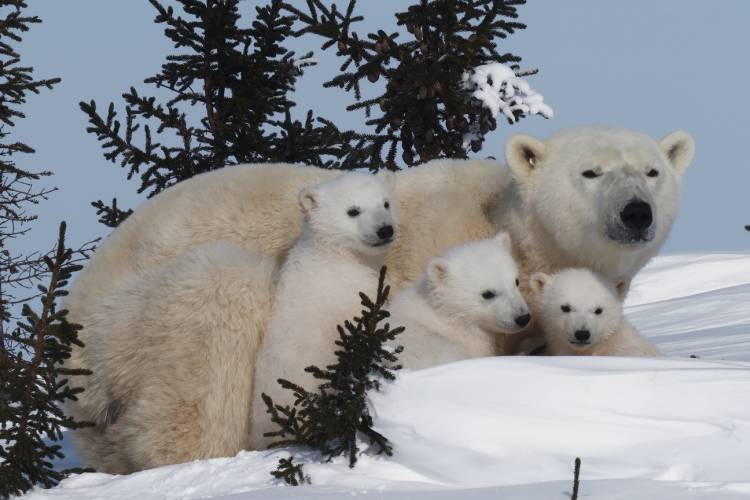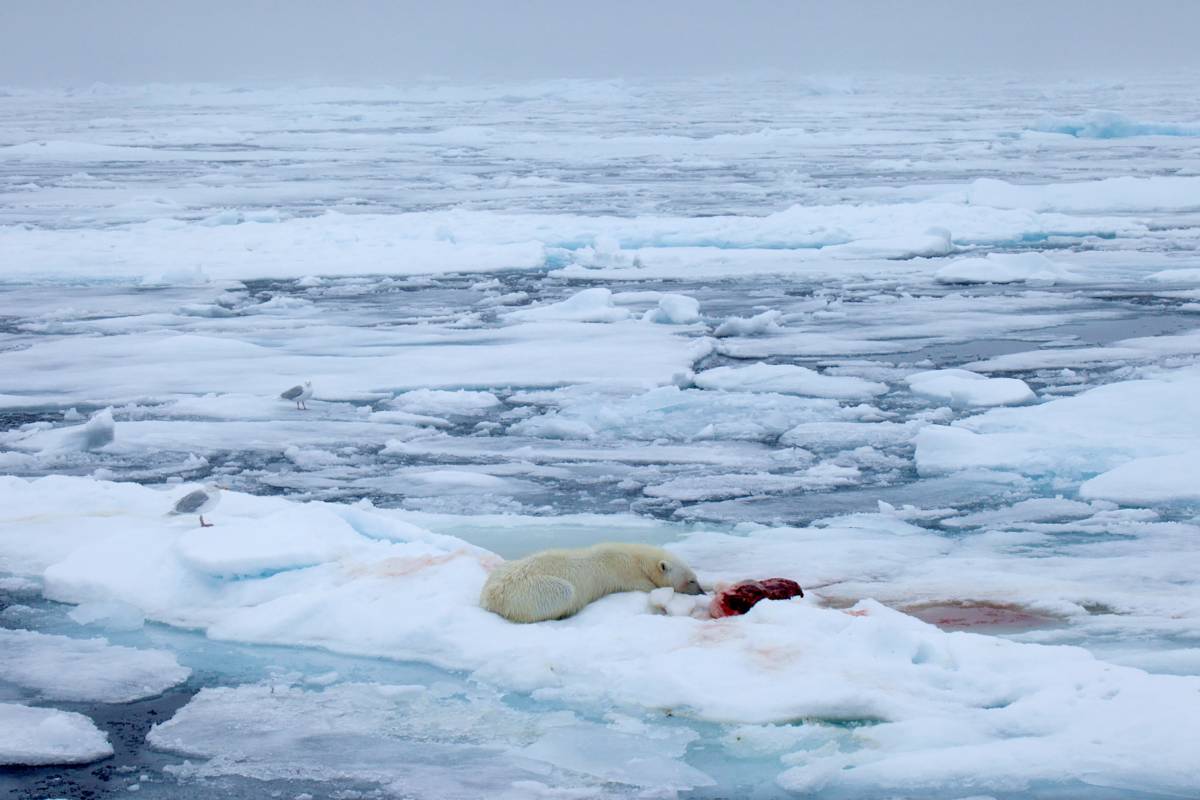
Photo: Kt Miller
Why Don't We Feed Wild Polar Bears?
MINS
20 Jul 2021
“Supplemental feeding at the scale required to maintain polar bear populations would be extremely difficult and expensive, to the point where it is not a practical long-term solution.”
In most jurisdictions around the world, feeding wildlife is prohibited by legislation. There are currently no supplemental feeding efforts for polar bears in any of the five nations where polar bears occur (known as the “Range States”). There are two situations, one in Kaktovik, Alaska, and another occurring in two communities of Chukotka, Russia, that represent artificial feeding. In Kaktovik, polar bears gather to feed on the remains of bowhead whales from subsistence hunts. Although polar bears in the wild will take advantage of dead whales and other marine mammals that are not part of their normal prey, the predictable availability of scraps from whales killed by human hunters is clearly an artificial food supplement. In Russia, managers relocate existing, natural food sources to places on the landscape that may draw polar bears away from coastal communities. Neither of these are formal supplemental feeding programs.
True supplemental feeding (the use of external food sources to help a species survive times when their natural foods are unavailable or in limited supply) has been successfully used, although not without complication, mainly for members of the deer family (e.g. for deer and elk in the U.S.). It also has been used in the management of black and brown bears in the U.S. and brown bears in Europe, specifically as a short-term response during years with a poor natural food supply and as a way to keep bears in the mountains/woods and out of communities, campgrounds, and garbage. Although these cases where bears have been fed certainly do supplement natural foods, they mainly are implemented in the diversionary context—not to enhance survival but to avoid conflicts with humans.
A key aspect of successful supplemental feeding is the short-term or seasonal application and a discrete geographic scale—feeding elk on winter ranges that have been restricted by human developments, for example. In contrast, the nutritional challenge facing polar bears is widespread and increasing. Unless global societies halt the increase in atmospheric concentrations of greenhouse gases, the sea ice habitat polar bears require to catch their seal prey can only decline in temporal and spatial availability, meaning an ever-growing nutritional need. Supplemental feeding at the scale required to mitigate negative population-level impacts of sea ice habitat loss, would be fraught with hurdles including sourcing foods of appropriate nutritional value, possible disease transfer, habituation, and creating artificial gatherings of bears that can increase other threats.
Given the long-term nature of the habitat changes in the Arctic, managers who begin a supplemental feeding program would be committed to maintaining those efforts for a very long time and at very great cost. A decade ago, we estimated that to feed only the bears coming ashore in the Churchill Manitoba area (perhaps the most accessible of all polar bear habitats) would cost over a million dollars per month. Costs of feeding could only grow as more bears in more parts of their range become food stressed. Few jurisdictions are willing to commit to permanent feeding of polar bears at the costs of many millions per month.
The long-term conservation of polar bears as a species can only be achieved by rapid and sustained reductions of global greenhouse gas emissions—combined with the successful management of short-term threats like harvest, disease, toxic pollutants, and denning habitat protection.
Polar Bears International is actively engaged in supporting research that improves our understanding of polar bears and climate impacts while we concurrently add our voice to the growing chorus on the need for climate mitigation and work with management authorities to support conservation efforts on the ground in real time.
Please visit the Become Part of the Solution section of our website to find out how you can get involved in protecting the polar bears’ future and saving our own. Also check out our Advocacy Toolkit.
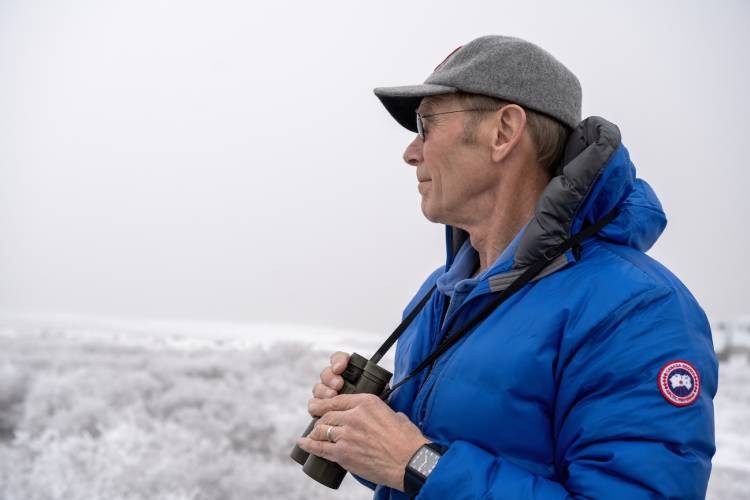
Photo: Jenny Wong
Meet Our Scientists
With researchers based in the U.S., Canada, Denmark, and Norway, our impact spans the circumpolar Arctic.



